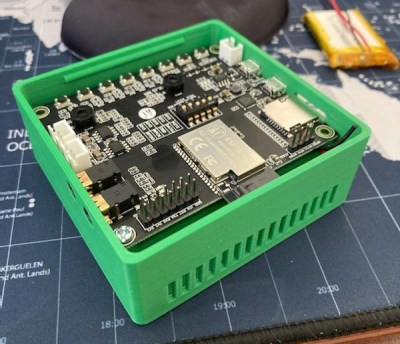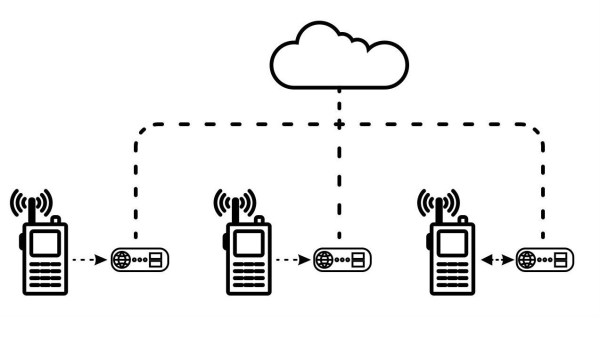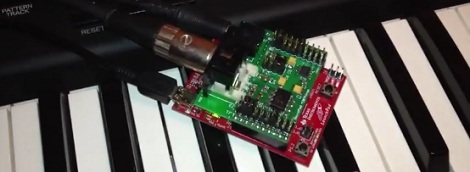[Mark J Hughes] volunteers as a part of a local community fire watch which coordinates by radio. The La Habra Heights region of Los Angeles is an area of peaks and valleys, which makes direct radio connections challenging. Repeaters work well for range improvement, but in such areas, there is no good place to locate these. [Mark] says that during an emergency (such as a wildfire) the radio usage explodes, with him regularly tracking as many as eight radio frequencies and trying to make sense of it, whilst working out how to send the information on and to whom.
This led him together with collaborator [Kaushlesh Chandel] to create Project Boondock Echo, to help alleviate some of the stress of it all. The concept is to use a cheap Baofeng radio to feed into a gateway based around an ESP32 audio development kit. Mount this in a box with a LiPo based power supply, and you’ve got yourself a movable radio-to-cloud time-shift audio recorder.
 By placing one or more of these units in the properties of several of the community group radio operators, all messages can be captured to an audio file, tagged with the radio frequency and time of transmission, and uploaded to a central server. From there they can be retrieved by anybody with access, no matter the physical location, only an internet connection is needed.
By placing one or more of these units in the properties of several of the community group radio operators, all messages can be captured to an audio file, tagged with the radio frequency and time of transmission, and uploaded to a central server. From there they can be retrieved by anybody with access, no matter the physical location, only an internet connection is needed.
The next trick that can be performed, is to reverse the process and queue up previous recordings, and send it back over the cloud to remote locations for re-transmission via radio into the field. This is obviously a massive asset, because wherever there is some urbanization, there is likely an internet connection. With the addition of a Boondock Echo unit, anyone that has a receiver within a few miles can be fully connected with what’s going on outside the range of direct radio communications.
Source for the ESP32’s firmware as well as the web side of things can found on the project Boondock Echo GitHub, complete with some STLs for a 3D printed box to sit it in. Like always, there’s more than one way to solve a particular problem. Here’s an amateur radio repeater based using an RTL-SDR and a Raspberry Pi.




















